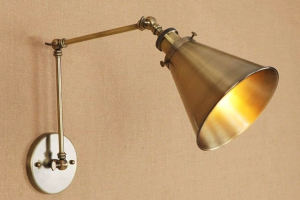Exquisite Hotel Villa: Luxurious Marble Chandelier

The history of marble chandeliers is a fascinating journey that intertwines art, architecture, and the evolution of lighting design. Marble, a material revered for its beauty and durability, has been used in various forms of decorative arts since ancient times. The origins of chandeliers can be traced back to the medieval period when they were primarily constructed from wood and iron.
These early lighting fixtures were utilitarian, designed to hold candles and illuminate large spaces such as churches and castles. However, as the Renaissance unfolded, the demand for more opulent and decorative lighting solutions grew, leading to the incorporation of luxurious materials like marble. By the 18th century, the use of marble in chandeliers sktong became more pronounced, particularly in Europe.
The Baroque and Rococo periods saw an explosion of ornate designs that featured intricate carvings and lavish embellishments. Marble was often combined with crystal and metal to create stunning visual contrasts. Notably, the famous Venetian glassmakers began to experiment with marble elements in their chandeliers, resulting in pieces that were not only functional but also served as status symbols for the wealthy elite.
The craftsmanship involved in creating these chandeliers was meticulous, with artisans dedicating years to perfecting their techniques, thus establishing a legacy that would influence future generations of designers.
The Design and Craftsmanship of the Luxurious Marble Chandelier
The design of a luxurious marble chandelier is a testament to the skill and artistry of its creators. Each piece is often custom-made, reflecting the unique vision of both the designer and the client. The process begins with selecting the right type of marble, which can vary from classic Carrara to exotic varieties like Calacatta or Emperador.
Each type of marble brings its own character, with distinct veining patterns and color palettes that can dramatically influence the overall aesthetic of the chandelier. Craftsmanship plays a pivotal role in the creation of marble chandeliers. Artisans employ traditional techniques that have been passed down through generations, often combining them with modern technology for precision.
The process typically involves cutting and shaping the marble into intricate designs, which may include floral motifs, geometric patterns, or even abstract forms. Once the marble components are shaped, they are polished to a high sheen, enhancing their natural beauty. The assembly of the chandelier requires not only technical skill but also an artistic eye, as each piece must be positioned to create a harmonious balance between light and shadow.
The Use of Marble Chandeliers in Exquisite Hotel Villas
Marble chandeliers have found a prominent place in the design of exquisite hotel villas around the world. These luxurious establishments often seek to create an atmosphere of opulence and sophistication, making marble chandeliers an ideal choice for their grand lobbies, dining areas, and private suites. The presence of a marble chandelier can elevate the overall design narrative of a space, serving as a focal point that draws guests’ attention and admiration.
In many high-end hotel villas, marble chandeliers are strategically placed to enhance architectural features such as vaulted ceilings or expansive entryways. For instance, the iconic Burj Al Arab in Dubai showcases stunning marble chandeliers that complement its lavish interiors, creating an ambiance that reflects both luxury and comfort. Similarly, the historic Ritz Paris features magnificent marble chandeliers that echo its rich heritage while providing modern amenities.
These chandeliers not only illuminate but also tell a story of elegance and grandeur, making them an essential element in luxury hospitality design.
The Impact of Marble Chandeliers on the Ambiance of a Space
The impact of marble chandeliers on the ambiance of a space cannot be overstated. Lighting is a crucial element in interior design, influencing mood and perception. Marble chandeliers, with their ability to diffuse light beautifully through their polished surfaces, create a warm and inviting atmosphere.
The interplay between light and marble enhances textures and colors within a room, adding depth and dimension that can transform even the simplest of spaces into something extraordinary. Moreover, the scale and design of a marble chandelier can significantly affect how a room feels. A grand chandelier can make a large space feel more intimate by drawing the eye upward and creating a sense of enclosure.
Conversely, smaller chandeliers can add charm and character to cozy nooks or dining areas without overwhelming them. The strategic placement of these fixtures allows designers to manipulate spatial dynamics effectively, ensuring that every corner of a room is bathed in flattering light while maintaining an air of sophistication.
Maintenance and Care of Marble Chandeliers
Maintaining a marble chandelier requires careful attention to detail to preserve its beauty and functionality over time. Regular cleaning is essential to prevent dust accumulation and maintain the luster of both the marble and any accompanying materials such as crystal or metal. A gentle approach is recommended; using a soft microfiber cloth dampened with water or a mild soap solution can effectively remove grime without scratching the surface.
In addition to cleaning, periodic inspections are crucial for ensuring that all components are secure and functioning correctly. This includes checking for loose wiring or connections that could pose safety hazards. If any bulbs need replacing or if there are signs of wear on electrical components, it is advisable to consult with a professional electrician who specializes in lighting fixtures.
Proper care not only extends the life of a marble chandelier but also ensures that it continues to be a stunning centerpiece in any space.
The Versatility of Marble Chandeliers in Different Design Styles
Modern Minimalism
In modern interiors, marble chandeliers can be designed with sleek lines and geometric shapes to achieve a minimalist look that emphasizes simplicity while still making a bold statement.
Traditional Elegance
In more traditional settings, ornate marble chandeliers adorned with intricate carvings and embellishments can evoke a sense of history and nostalgia. These pieces often serve as conversation starters, drawing attention to their craftsmanship and artistry.
Versatility in Hybrid Styles
Marble chandeliers can also enhance hybrid styles such as industrial chic or eclectic design. By combining raw materials like metal with refined marble, an intriguing juxtaposition is created, which enhances visual interest.
The Cost and Investment of a Luxurious Marble Chandelier
Investing in a luxurious marble chandelier is not merely about acquiring a lighting fixture; it is about making a statement that reflects personal taste and lifestyle aspirations. The cost of these chandeliers can vary significantly based on factors such as size, complexity of design, type of marble used, and the reputation of the designer or manufacturer. Custom-made pieces tend to command higher prices due to their unique nature and the labor-intensive craftsmanship involved.
While the initial investment may be substantial, many view marble chandeliers as long-term assets that can enhance property value. A well-crafted chandelier can become an heirloom piece passed down through generations, retaining its allure over time. Additionally, in high-end real estate markets, properties featuring exquisite lighting fixtures often attract discerning buyers willing to pay a premium for luxury finishes.
The Future of Marble Chandeliers in Interior Design
As interior design continues to evolve with changing trends and technologies, the future of marble chandeliers appears promising yet dynamic. Designers are increasingly exploring innovative ways to incorporate traditional materials like marble into contemporary designs while embracing sustainability practices. This shift may lead to new techniques in sourcing eco-friendly marbles or utilizing reclaimed materials for chandelier construction.
Moreover, advancements in lighting technology are likely to influence how marble chandeliers are designed and utilized. Integrating LED lighting systems can enhance energy efficiency while allowing for customizable lighting effects that adapt to different moods or occasions. As designers experiment with these technologies alongside timeless materials like marble, we may witness a renaissance in chandelier design that honors tradition while embracing modernity.
In conclusion, marble chandeliers represent more than just functional lighting; they embody artistry, history, and luxury within interior spaces. Their enduring appeal lies in their ability to adapt across styles while maintaining an air of sophistication that captivates all who encounter them. As we look ahead, it is clear that these magnificent fixtures will continue to illuminate our lives in ever-evolving ways.





